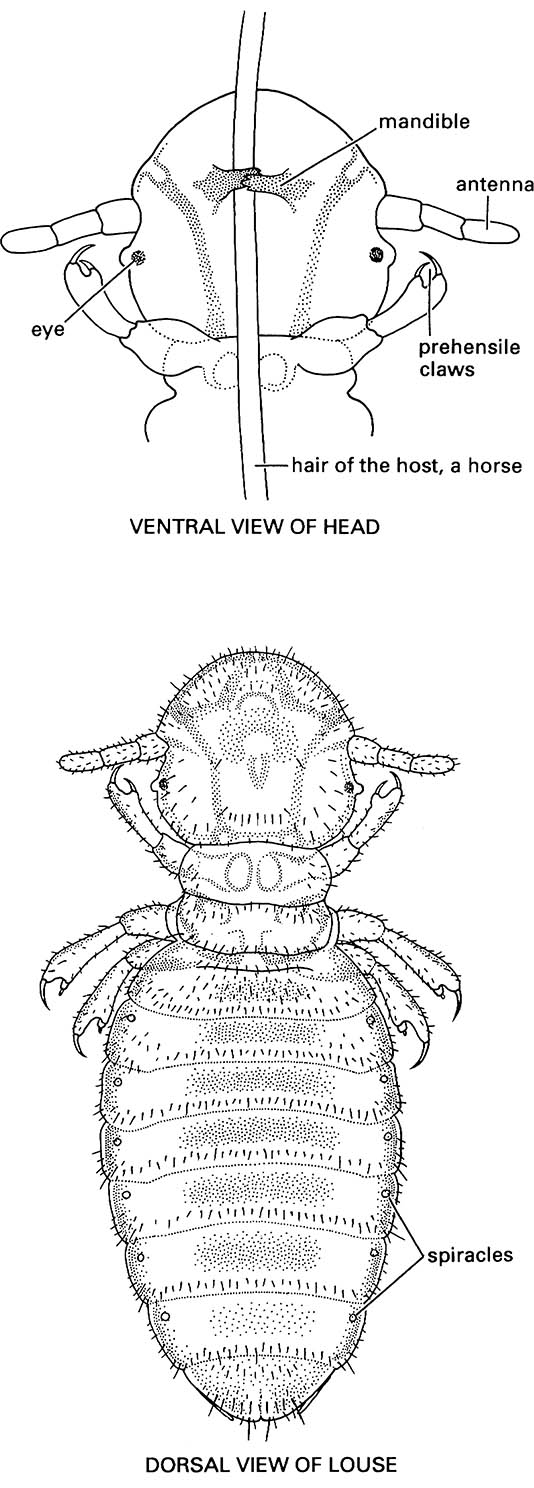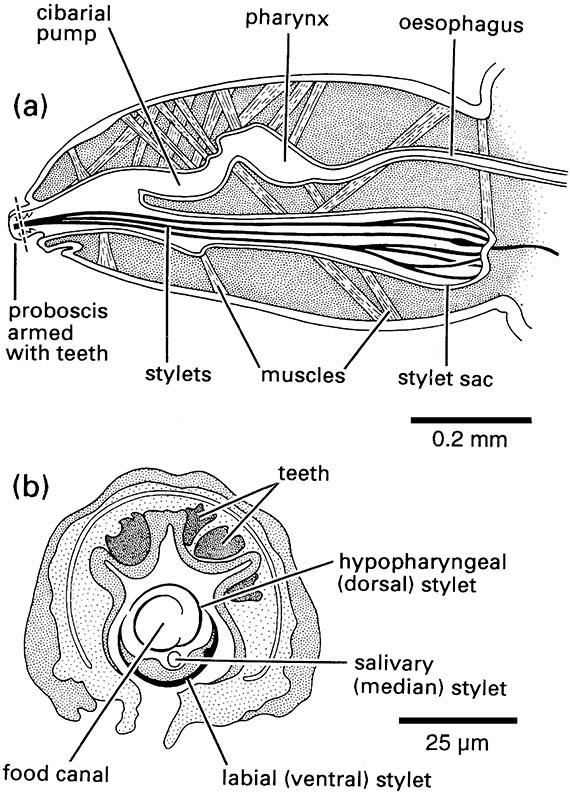Box 15.3. Phthiraptera (lice)
The Phthiraptera is an order of some 5000 species of highly modified, apterous, dorsoventrally flattened ectoparasites, as typified by Werneckiella equi, the horse louse (Ischnocera: Trichodectidae) illustrated here. Lice are classified in four suborders: Rhynchophthirina (a small group found only on elephants and wart hogs), Amblycera and Ischnocera (the chewing or biting lice, formerly called Mallophaga), and Anoplura (sucking lice). Development is hemimetabolous. Mouthparts are mandibulate in Amblycera and Ischnocera, and beak-like for piercing and sucking in Anoplura (Fig. 2.14), which also lack maxillary palps. The eyes are either absent or reduced; the antennae are either held in grooves (Amblycera) or extended, filiform (and sometimes modified as claspers) in Ischnocera and Anoplura. The thoracic segments are variably fused, and completely fused in Anoplura. The legs are well developed and stout with strong claws used in grasping host hair or fur. Eggs are laid on the hair or feathers of the host. The nymphs resemble smaller, less pigmented adults, and all stages live on the host.
Lice are obligate ectoparasites lacking any free-living stage and occurring on all orders of birds and most orders of mammals (with the notable exception of bats). Ischnocera and Amblycera feed on bird feathers and mammal skin, with a few amblycerans feeding on blood. Anoplura feed solely on mammal blood.
The degree of host-specificity amongst lice is high and many monophyletic groups of lice occur on monophyletic groups of hosts. However, host speciation and parasite speciation do not match precisely, and historically many transfers have taken place between ecologically proximate but unrelated taxa (section 13.3.3). Furthermore, even when louse and host phylogenies match, a lag in timing between host speciation and lice differentiation may be evident, although gene transfer must have been interrupted simultaneously.
As with most parasitic insects, some Phthiraptera are involved in disease transmission. Pediculus humanus corporis, the human body louse, is one vector of typhus (section 15.5.3). It is notable that the subspecies P. humanus capitis, the human head louse (and Pthirus pubis, the pubic louse, illustrated on the right in the louse diagnosis in the Appendix), are insignificant typhus vectors, although often co-occurring with the body louse.
Phthiraptera are derived from within Psocoptera, all members of which are free living. Phylogenetic relation- ships are considered in section 7.4.2 and depicted in Fig. 7.2.


(a) Longitudinal section of head (nervous system omitted). (b) Transverse section through eversible proboscis. The plane of the transverse section is indicated by the dashed line in (a). (After Snodgrass 1935)

Broken lines indicate uncertain relationships. Thysanura sensu lato refers to Thysanura in the broad sense. (Data from several sources)



